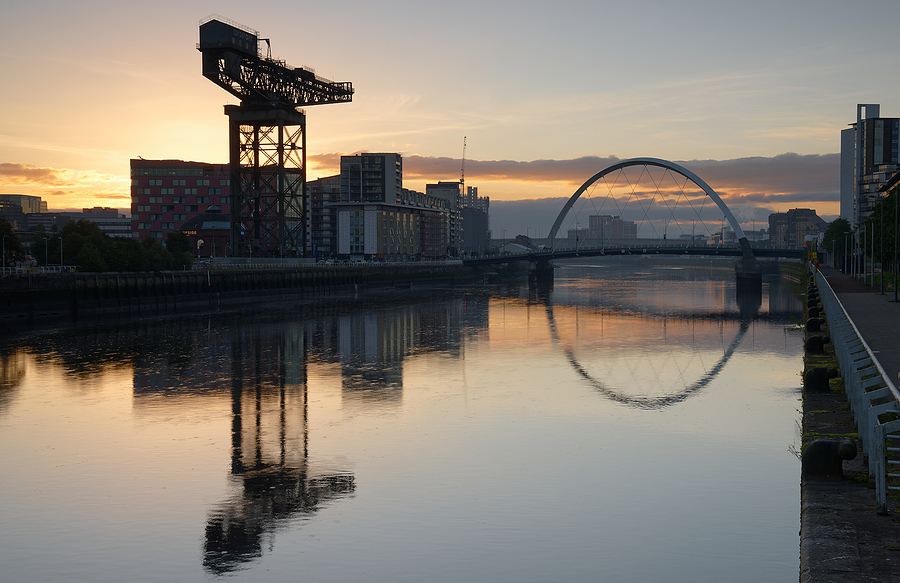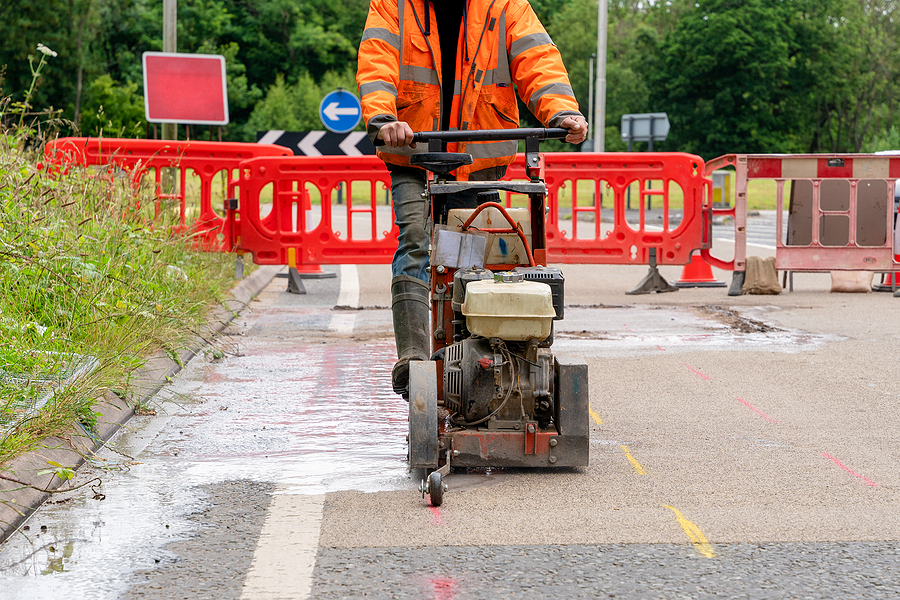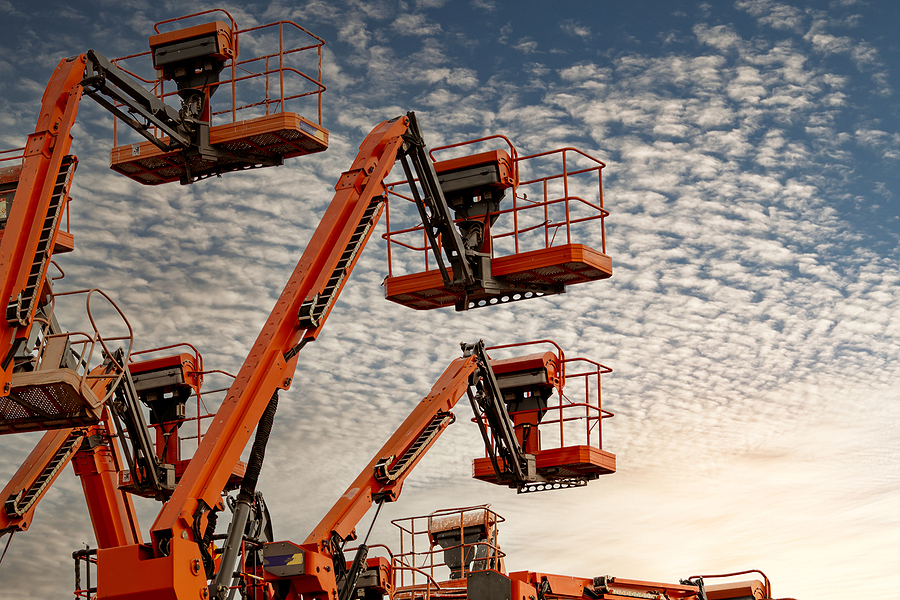How Winter Weather Affects Our Roads
With summer slowly sinking into the background and winter rearing its head, we can expect the weather to worsen and the temperatures to plummet as the frost sets in.
It isn’t just us who will feel the effects of the cooler weather though and our roads will likely suffer at the hands of the cold too.
Winter brings rain and ice and when water seeps into cracks into the roads and freezes, cracks can worsen due to water expanding as it turns into ice. This means that over the course of the winter, existing cracks and potholes can grow and become larger and more dangerous.
Cracks and holes in our roads and pavements can cause them to degrade over time. Failing to fix these cracks can lead to them turning into larger potholes which can pose a danger to road users and pedestrians.
Slippery roads are far more dangerous, as well. Snow and ice reduce friction and therefore vehicles must travel at much slower speeds in order to remain safe.
This can lead to many more road traffic collisions as drivers have reduced control over their vehicles and traffic builds up, also presenting a higher risk of accidents.
Potholes and cracks that require mending are often left as there is simply no way to close roads down in order to fix them. Often these repairs are done overnight but there is still not enough time for the repairs to settle and cure,, so damage will reappear in the same location time and time again.
Salting roads can help prevent ice from forming as it lowers the freezing point of water, so roads are less slippery to use. This also helps prevent ice from expanding cracks.
Road surfacing companies often require large areas and more time in order to do their job properly and it is hard to accommodate this on busy, main roads without careful planning and scheduling, which means some roads may go years without repair and deteriorate further.
However, salt isn’t a superhero fix. Salt can be damaging to vehicles on the road, chipping at paintwork and corroding the bodies of vehicles, as well as corroding the road itself. Salt corrosion is a huge issue during winter and it seems that you cannot fix one problem without causing another.
Salt can also cause environmental issues, as it can seep into the groundwater and earth around roads. Once salt enters the soil and water, it is near impossible to remove and thus presents an environmental hazard that can harm plants and wildlife.
This increases over time as well, so each year that passes introduces more unremovable salt into the environment, which is detrimental to the wildlife around us.
Winter weather causes more damage than we are aware of to our roads and pavements and a lot of it is invisible. Being vigilant and aware when using roads in the colder months can help improve your safety and the safety of other road users as well.
Read moreHow A Disused Crane Became The Symbol Of Glasgow
Whilst in some cases a town or city gets to choose its symbols and iconic landmarks such as the Sydney Opera House, in other cases the representation of a city’s heritage is decided by history.
This is especially true in the case of the Finnieston Crane, which despite having been replaced by a different crane hire decades ago and no longer in use, remains as a symbol of the engineering heritage of Glasgow to the point that it still appears in the background of the BBC programme Reporting Scotland.
It has even inspired the most unlikely of artists, but why is this the case? How did a crane lift itself up to become such a cultural touchstone?
The Biggest Dockworker On The Quay
One of the more confusing elements about Finnieston Crane is that it refers to two separate but very similar cantilever cranes.
The first was originally erected on York Street but by 1848 had been moved to Finnieston Quay with the specific role of lifting heavy machinery (typically steam locomotives) from the dock onto steamships to export around the world, hence why it was built on the River Clyde.
By 1877, Queen’s Dock had been opened on Finnieston Quay to help export goods from the centre of Glasgow, and a 130-tonne steam crane was constructed by the 1890s to help facilitate this.
Unfortunately, the first Finnieston Crane no longer exists; there was a proposal to build a bridge between Finnieston and Mavisbank and the initial crane was demolished to make way for this.
The bridge ultimately never came to be, so in 1928, the Clyde Navigation Trust commissioned a replacement tower, officially known as Clyde Navigation Trustee’s Crane #7 or the Stobcross Crane, but commonly referred to simply as Finnieston Crane regardless.
Decay And Rebirth
Queen’s Dock was closed in 1969; by this point, Glasgow and the banks of the Clyde had transformed thanks to the lingering effects of the Clydebank Blitz and general economic shifts away from the UK.
As of 1988, the crane is no longer functional, but the last major job it had highlighted its importance to the future.
The Mayfest Arts Festival in Glasgow had an exhibition in 1988 known as TSWA 3D, a UK-wide campaign by Television South West Arts to create new locations for striking art installations at various different sites.
The Finnieston Crane was used to lift a straw sculpture of a train for 48 days before the model was ceremonially burned, leaving only its metal frame and a question mark, which itself was hung from the crane in 2012 after the death of its creator, George Wyllie.
Unlike the original crane that bore its name, it never ran the risk of being taken down, being made a listed building in 1989 and ensuring it would hang over Glasgow’s former dockyards as they were further regenerated.
It has since appeared in several fascinating places such as on early boxes of Meccano as illustrated by W.H. Pynion.
As well as this, alternative comic Limmy referenced the “Cran’” in an often quoted sketch from 2011’s Limmy’s Show.
Read moreRoad Surfaces Need ‘Significant Improvement’ For Driverless Cars
Road surfaces in the UK need to undergo significant repairs for the government to be able to go ahead with its plans for self-driving cars by 2025.
This is the opinion of Britpave, which stated these vehicles need well-maintained road surfaces, so the cars’ sensors can work effectively and accurately.
Britpave chairman Joe Quirke stated: “The technological advancement of self-driving vehicles needs to be matched by investment in long-term robust road solutions.”
While drivers can assess the road and determine whether they need to swerve slightly to the left or right to avoid potholes or uneven road surfaces, self-driving motors will not be able to do this. This will lead to more wear and tear on the unmanned vehicles.
“To counteract this, roads will have to provide far more long-term robustness than they do at present,” Mr Quirke noted.
He suggested roads be designed with more resilience to climate changes, so they do not become as effected by extreme weather.
The government intends for self-driving vehicles to be the norm within three years, which it hopes will “revolutionise public transport”.
An official report highlighted the benefits of self-driving cars, stating they could reduce road casualties by 30 per cent by 2033, benefit the economy by £51 billion per year by 2030 as a result of fewer accidents, and increase jobs by 47,000.
It also noted “increased road safety, improved efficiency and more cost-effective transport” as advantages of automated vehicles when they are rolled out.
For surfacing contractors in Hull, get in touch today.
New Leeds Residential Development Gains Planning Permission
A new build-to-rent development in Leeds featuring 375 apartments has been given the green light, ensuring yet another major construction project is in the pipeline.
Developer McClaren Living will build the £85 million development at Beck Yard in the South Bank regeneration area of the city, with the scheme also featuring 30,000 sq ft of outdoor realm, 7,000 ft of indoor amenities including lounges, shared workspaces and a gym, plus three rooftop gardens.
The loftiest of these will be on the 14th floor, which means crane hire will be required as part of the building process.
Managing Director of McLaren Living Matthew Biddle remarked: “It’s an excellent time to be working in the city. Leeds is one of the UK’s fastest growing cities, forecast to grow by 21 per cent over the next ten years.”
He said the “future is bright” for the city as it is becoming home to many headquarters of major companies, with Channel 4 set to move to a new home there and the BBC planning to establish a larger presence too.
The recent growth of the city has certainly been evident in more ways than one. The 2021 Census showed the population of Leeds had risen over the decade since 2011 from 751,500 to 812,000. A 21 per cent rise from this would take the 2031 population to 982,000, close to making Leeds only the third UK city with a population over a million after London and Birmingham.
Leeds is also seeing major growth in its built environment as a plethora of ongoing and new projects keep the construction and plant hire sectors busy.
Earlier this month, planning permission was granted for three towers on the former site of the Yorkshire Evening Post. Student accommodation developer Urbanite is behind the plan, with the tallest of the trio set to require a large crane as it rises to 42 storeys in height.
Read more
Plans Submitted For Iconic Leeds Site
The iconic site of the former Yorkshire Evening Post offices in Leeds could be about to become the home of the latest tall buildings in the city centre.
Permission is being sought by a combination of student accommodation developer Urbanite, architects DLA and consultant Quod. If the scheme gets the go-ahead, it will be transformed with a trio of new towers.
The site was cleared in 2014 and lies at the important Wellington Street Gateway, making it a prime location to develop with the three mixed residential buildings. The plans will see the old Yorkshire Post Tower being reinvented with a piece of public art, while over half of the ground around the building will become public realm, including a mini-forest to capture carbon and improve air quality.
Urbanite spokesman Daniel Newett said: “We are delighted to reach this landmark with a scheme worthy of this important strategic site.
He added: “The team has helped us to arrive at a viable and deliverable scheme that will regenerate a key strategic gateway in the West End of Leeds.”
The need for crane hire in Yorkshire is certainly showing no signs of slowing down with projects like this taking place in Leeds and transforming the skyline of a city that, despite a resident population of 812,000, has a comparatively low rise skyline when set against places like Manchester and Birmingham.
DLA is involved in that change, with its designs in Leeds including another project in the West End, the Lisbon Street development. This four-building, high rise project has been designed to include 629 build to rent apartments, 548 student beds, a 120-room aparthotel and 131,00 sq ft of Grade A office and retail space.
Leeds presently has three buildings of over 100 metres in height, all built in the 21st century, with more planned or under construction.
Read more




